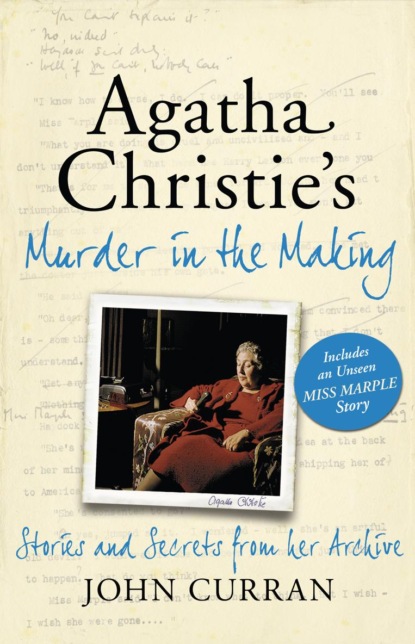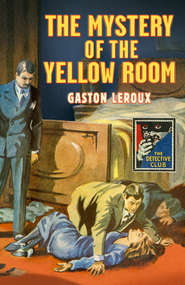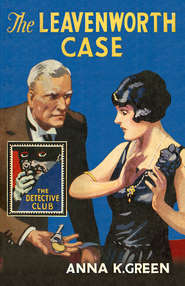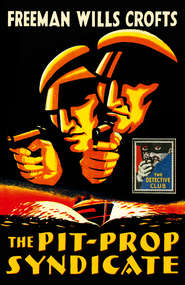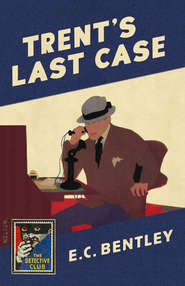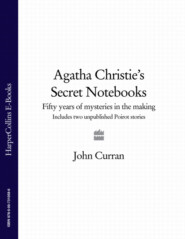По всем вопросам обращайтесь на: info@litportal.ru
(©) 2003-2024.
✖
Agatha Christie’s Murder in the Making: Stories and Secrets from Her Archive - includes an unseen Miss Marple Story
Настройки чтения
Размер шрифта
Высота строк
Поля
Now, the actual events from the beginning …
Sequence
At theatre – CA’s performance – H’s reflections. Is JW really such a good actress? Looks round – JW – her eyes sparkling with enthusiasm. Supper at Savoy – Jane at next table – CA there also …
Enter Bryan (and CA) JW has gone into bedroom …
Next JW herself – her account – the telephone call …
With Jenny Driver – called for her – 8.30 – and took her out for evening …
Immersed mentally in the West End of night clubs and theatres and hat shops and dinner parties, she fails to notice the train slowing down until it jerks to a stop and her pen stabs the page. Glancing up briefly, she notes the approach of the ticket collector and reaches into her handbag to retrieve her ticket. Anxious to return to Jane and Carlotta and Miss Carroll, she begins a new page.
She is relieved? or disappointed. P asks if he can see Miss Carroll …
Her pen falters and she shakes it impatiently; a large splash of black ink obliterates most of the page.
Oh, what a mess … how can I mop it up?… no, I’ll just tear it out completely and start again … luckily, it’s a new page and I won’t lose the back …
‘Tickets, please.’
Distracted, she tears the page from the notebook and produces her ticket, noting idly that the official has a button missing from his uniform.
‘Thank you, Ma’am.’
Now, where was I? … Poirot was about to question Jenny … no, Miss Carroll … and he was talking to … let me check …
She unfurls the discarded, blotted page and studies it.
he is relieved
… who is?… was he not talking to … Oh, I see what’s happened … I didn’t remove it completely … there’s still some of the first word left in the notebook … makes quite a difference … now, I wonder …
She stares out the carriage window but instead of snow-covered countryside she sees Poirot, clutching a letter with a torn edge, gesticulating and explaining excitedly to Hastings, who merely looks bewildered, completely missing the vital point. She picks up her pen once more and while the idea is fresh in her mind dashes down her inspiration – an inspiration that will hang the murderer of Lord Edgware.
P looking at letter –
He had to tear it – you see?
I see nothing …
Letter … suggesting the letter was She…
INTRODUCTION
‘If one idea in particular seems attractive, and you feel you could do something with it, then you toss it around, play tricks with it, work it up, tone it down, and gradually get it into shape.’
Introduction to Passenger to Frankfurt
The 73 notebooks reposed in an unpretentious brown cardboard box at the bottom of a cupboard; notebooks in various shapes, sizes, colours and states of preservation, covered with sprawling and often illegible handwriting in pencil, fountain pen and biro; no chronology, no order, no method; but a splendid profusion of imagination.
This was my introduction to the Notebooks of Agatha Christie on a November evening in 2005 as I stood upstairs in Greenway House, her former Devon home. Downstairs Mathew Prichard, her grandson, sat in the library surrounded by the books from his grandmother’s childhood as well as numerous examples of her own literary output. At Mathew’s invitation I was spending the weekend in Greenway House, and I passed most of those few days in a small room at the top of the stairs which contained the archive of Agatha Christie’s literary life. It was a breathtaking and absorbing miscellany of signed first editions and much-read paperbacks, typescripts and manuscripts, letters and contracts, theatre programmes and film posters, audio and video tapes, film and television scripts; and 73 notebooks.
Hours after I laid eyes on the notebooks for the first time I was still immersed in the fascinating behind-the-scenes look at the plotting of the best detective novels of the century. Every Notebook contained fresh surprises – Miss Marple in Death on the Nile; Mrs Oliver in They Came to Baghdad; a different ending for Crooked House; the ‘lost’ chapter of The Mysterious Affair at Styles; an altered killer in A Murder is Announced. Scattered among these revelations were notes for projected stage adaptations and possible short story expansions, along with the outline for a novel to follow Postern of Fate, and the discovery of a new timeline for Sleeping Murder.
Appearance
The Notebooks of Agatha Christie are a unique and priceless literary heritage. But viewed solely as physical objects they resemble a pile of exercise books, similar to those gathered by teachers at the end of class in schools the world over. Red and blue and green and grey exercise books, coverless copy-books ruled with wide-spaced blue lines, small black pocket-sized notebooks: The Minerva, The Marvel, The Kingsway, The Victoria, The Lion Brand, The Challenge, The Mayfair.
Some years before her death Rosalind Hicks, Agatha Christie’s daughter, arranged that the contents of the Notebooks be listed and in this process each was allocated a number from 1 through to 73; this numbering is completely arbitrary and a lower number does not indicate an earlier year or a more important Notebook.
The number of pages used in each Notebook varies greatly – Notebook 35 has 220 pages of notes while Notebook 72 has a mere five. Notebook 63 has notes on over 150 pages but Notebook 42 uses only 20. The average lies somewhere between 100 and 120.
Contents
In a career spanning more than 55 years and two world wars, the loss of some Notebooks is inevitable, but the reassuring fact is that it seems to have happened so seldom. From the 1920s we have notes only for The Mysterious Affair at Styles, The Man in the Brown Suit, The Secret of Chimneys and The Mystery of the Blue Train. For the collection Partners in Crime, there are only the sketchiest of notes and for The Murder of Roger Ackroyd there remains only an incomplete list of characters. From the prolific 1930s onwards, however, the only missing book titles are Murder on the Orient Express, Cards on the Table and, apart from a passing reference, Murder is Easy. And although there are notes on most of Christie’s stage work, including unknown, unperformed and uncompleted stage and radio plays, only two pages each are devoted to her most famous play and her greatest, Three Blind Mice (as it was before it became The Mousetrap) and Witness for the Prosecution respectively.
Not all the Notebooks are concerned with Christie’s literary output. Notebooks 11, 40 and 55 consist solely of chemical formulae, probably from her days as a student dispenser; Notebook 71 contains French homework; Notebook 73 is completely blank. Moreover, she often used them for making random personal notes, sometimes on the inside covers. There is a list of ‘furniture for 48 [Sheffield Terrace]’ in Notebook 59; Notebook 67 has reminders to ring up Collins and make a hair appointment; Notebook 68 has a list of train times from Stockport to Torquay.
In only five instances is a Notebook devoted to a single title. Notebooks 26 and 42 are entirely dedicated to Third Girl; Notebook 68 concerns only Peril at End House; Notebook 2 is A Caribbean Mystery; Notebook 46 contains nothing but extensive historical background and a rough outline for Death Comes as the End. In some cases the notes are sketchy, consisting of little more than a list of characters – for example Death on the Nile in Notebook 30. Other titles have copious notes – They Came to Baghdad has 100 pages, while Five Little Pigs and One, Two, Buckle my Shoe each have 75 pages.
Chronology
Although there are 73 Notebooks, complete (day/month/year) dates are given only on six occasions, and they are all from the last ten years of Christie’s life. In the case of incomplete dates it is sometimes possible to work out the year from the publication date of the title in question, but sometimes this is almost impossible, because …
First, use of the Notebooks was utterly random. Christie opened a Notebook (or, as she says herself, any of half a dozen contemporaneous ones), found the next blank page, even one between two already filled pages, and began to write. And to compound this unpredictability, in almost all cases she turned the Notebook over and, with admirable economy, wrote from the back also.
Second, in many cases jottings for a book may have preceded publication by many years. The earliest notes for The Unexpected Guest are headed ‘1951’ in Notebook 31, in other words seven years before its first performance; the germ of Endless Night first appears, six years before publication, on a page of Notebook 4 dated 1961.
Third, the pages following a clearly dated page cannot be assumed to have been written at the same time. For example:
page 1 of Notebook 3 reads ‘General Projects 1955’
page 9 reads ‘Nov. 5th 1965’ (there were ten books in the intervening period)
page 12 reads ‘1963’
page 21 reads ‘Nov. 6 1965 Cont.’
page 28 is headed ‘Notes on Passenger to Frankfort [sic] 1970’
page 36 reads ‘Oct. 1972’
page 72 reads ‘Book Nov. 1972’
In the space of 70 pages we have moved through 17 years and as many novels and, between pages 9 and 21, skipped back and forth between 1963 and 1965.
Finally, because many of the pages contain notes for stories that were never completed, there are no publication dates as a guideline. Deductions can sometimes be made from the notes immediately preceding and following, but as we have seen, this method is not entirely flawless.





